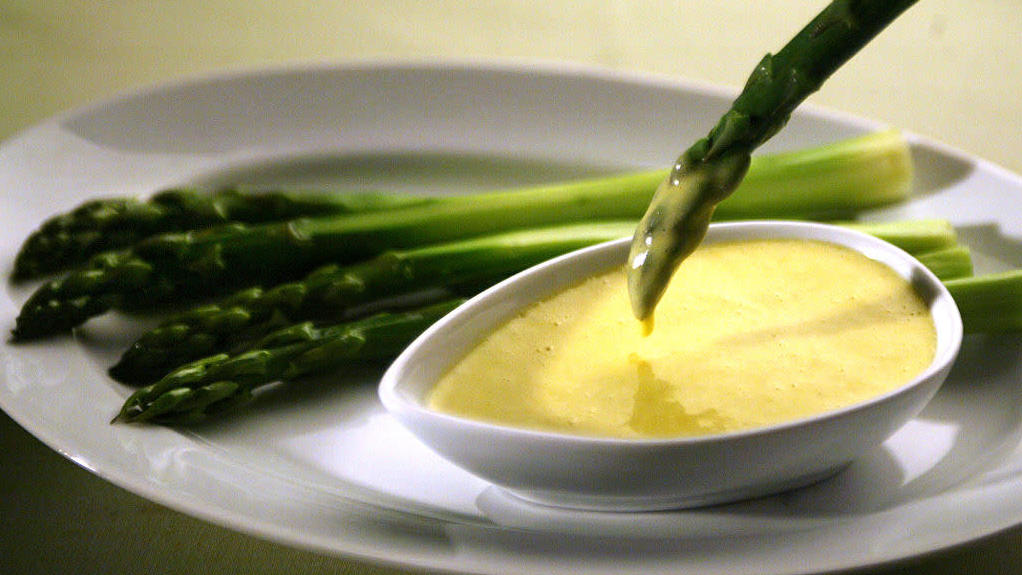Anyone Can Make Aioli
Even though traditional aioli is not mayonnaise, the terms "mayonnaise" and "aioli" have become virtually interchangeable on restaurant menus because they're both oil-based emulsions. The main difference is that aioli sounds far more impressive. (And expensive!) Whereas mayo has a mild, inoffensive flavor that can be jazzed up with all sorts of spices and flavorings, a true aioli has defining flavors of raw garlic and olive oil, which will always peek through no matter what other ingredients you use to dress it up. Though mayo and aioli have slight differences, both sauces are made the same way with many of the same ingredients, and both can be finicky little buggers if you're not used to emulsifying things in your spare time. But fear not, as we have come to deliver you from the devastation of failed, broken sauces! Aioli exists to make us happy, not drive us to tears.
To avoid failure, it's important to know exactly what it is you're doing, and why it works. Emulsions are created when you take two substances that do not want to mix—in this case, oil and water—and force them to play nice through the use of sheer force, with a bit of assistance from ingredients known as emulsifiers, which help bind them. (Think of emulsifiers like tasty double-sided tape.) One of the strongest, most popular emulsifiers is lecithin, and egg yolks are full of them. Both mayonnaise and aioli begin by mixing an egg yolk with a small amount of water-based liquid—in mayonnaise, this is usually vinegar and mustard (also an emulsifier!); in aioli, lemon juice and pulverized garlic—and then the real fun begins. It might seem crazy, but a large quantity of oil is going to be suspended inside that tiny bit of liquid by adding it in sloooowly while beating the crap out of it. This breaks up the oil into thousands of tiny droplets for the lecithin can grab onto; the lecithin then forces the oil and water to hold hands and become best buddies.
Back in the olden times when all chefs had to work with was the brute strength of their whisking arm, aioli was made by vigorously beating the egg yolks with one hand while slowly drizzling the oil with the other. This method remains popular with people who have coordination and impressive forearm strength, but for the rest of us, it's easier to make emulsions with a blender or food processor. However, even if you follow all the instructions to the letter, it's still possible for the emulsion to break via the tiniest of mistakes, resulting in a container full of cloudy oil instead of a creamy, luscious aioli.
In addition to the risk of failure, another hurdle to homemade aioli is the use of raw egg yolk; although the risk of finding an egg contaminated with salmonella is about one in 20,000, some people are still uncomfortable using raw eggs, which is fine; if you subconsciously don't feel safe eating something, you won't enjoy it. Besides, there's a way to make perfect aioli that doesn't involve egg yolks, and it knocks your chances of failure to practically zero. Even better, the magic ingredient to save you from aioli hell is probably already in your kitchen! Here's the secret: To make a foolproof aioli, don't use egg yolks—use mayonnaise.
That's right, folks: aioli's "boring" cousin is ready, willing, and able to help you will all your emulsion needs, thanks to the fact that, well, it's already an emulsion. Think of mayo as a foundation, the sturdy base upon which bigger things can be built. Hell, when starting off with something this solid, you don't even need the help of appliances or mega-swole forearms to make aioli, which is a wonderful thing when you only need small amounts and/or haven't been going to the gym. Small mistakes won't destroy your aioli or your sanity. Best of all: there's no discernible difference in flavor from egg-yolk-based aioli, so you don't have to feel like you're "cheating" or settling for second best. You can and you will make a successful aioli. I believe in you, and so does mayonnaise.
Aioli
- 2 heaping Tbsp. mayonnaise
- Juice of half a large lemon (about 1 Tbsp., but don't worry about measuring)
- 2 or more cloves of raw garlic, Microplaned (the amount is up to you, but it's best to start small and taste as you go; you can always add more, but you can't take it away)
- 3/4 cup to 1 cup olive oil
- Kosher salt, to taste
Whisk the mayonnaise, lemon juice, and Microplaned garlic in a small mixing bowl until well combined. While whisking constantly, add the olive oil a few tablespoons at a time, beating vigorously between each addition. Taste as you go, adding more oil or garlic as you see fit. Once you've achieved your desired consistency, add salt to taste. Let the aioli sit for at least 20 minutes before serving to give the flavors time to meld.
